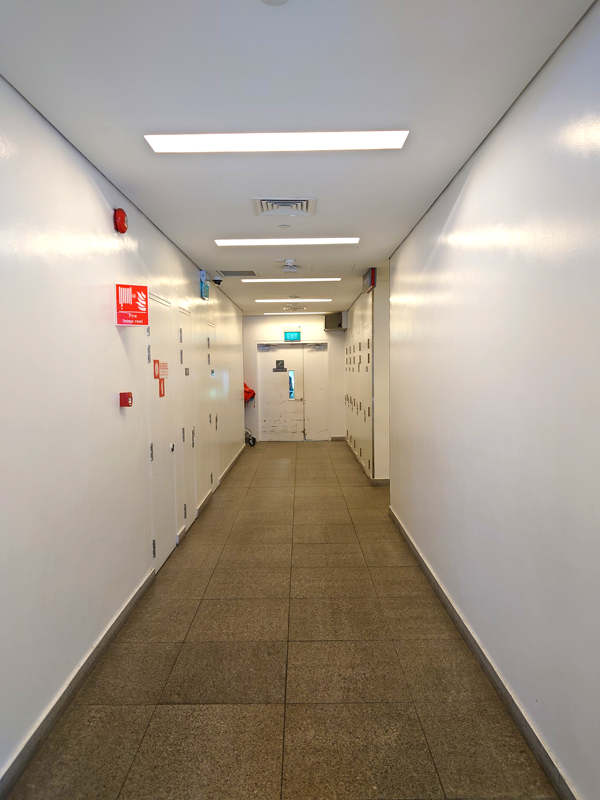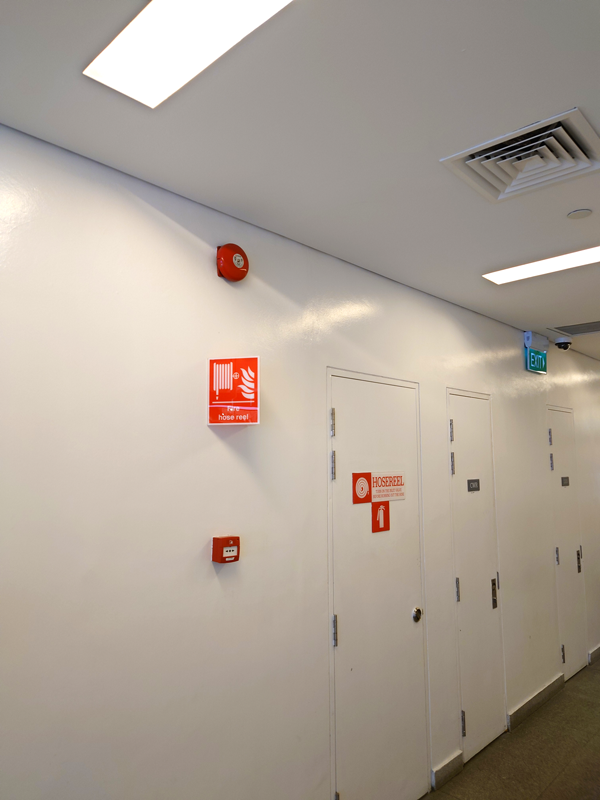Based on recent statistics from SCDF, fire incidents in commercial premises in Singapore have jumped 21.1% from 2020 to 2021. If that’s not a sign to review and update your existing fire safety protocols for your commercial building, which includes where to place fire extinguishers, we don’t know what is!
As part of Fire Armour’s series of educational articles, our fire safety professionals are here to share more about how you should consider your fire extinguisher placements – from adhering to Singapore Standards for the industry to ensuring that they are easily accessible in a fire.
Singapore Standards 578 : 2019 Placement of Fire Extinguishers
For the uninitiated, the Singapore Standards are nationally recognised documents that have been established to serve as guidance on standards used for industrial activities.
For fire safety, there’s a specific standard, SS 578 that documents and prioritizes the various ideal placements of fire extinguisher placement. The golden rule? That they should be placed conspicuously near exits and along routes of escape.
To save you the trouble of going through the lengthy documents, here’s a snippet of the relevant clauses (reworded for easier understanding):
Clause 7.2 Extinguishers shall be conspicuously located in positions where they will be readily accessible and immediately available in the event of a fire.
They shall be located in the following priority:
- Exit staircases (just beside the exit doors but not inside the exit staircase)
- Exits (for 1st storey)
- Common lobby or common corridor
- Room exit access doors
- Internal corridor along the path of escape.
In circumstances where visual obstruction cannot be completely avoided, clear and conspicuous signage should indicate the placement of the fire extinguisher.
Clause 7.3 Extinguishers provided to deal with specific risks shall be placed near to the risk concerned, but not too near as to be inaccessible in case of fire. If the specific risk is contained within a confined space, it is recommended to position the extinguisher outside that space.
Find it hard to understand the clauses still? Not to worry, we summarize the 3 main takeaways you need to know below.
Place your fire extinguishers in front of doors
The most common mistake in commercial buildings is to place the fire extinguisher in the room or behind a door rather than in the common corridor.
It is such a common error that the standards have taken to specifically include this instruction in the clause – Clause 7.2 (a) has a special mention of placing fire extinguishers in front of the door but not inside the exit staircase.
Wondering why is there such a fuss over placing fire extinguishers in front of doors and not behind doors? There are two main reasons for that!
The first reason is that placing a fire extinguisher behind a door would make it difficult to know that there is a fire extinguisher there in the first place. Suppose a fire broke out in the room and everyone is rushing through the corridors looking for a fire extinguisher.
With closed doors, who would be able to tell where the fire extinguishers are? They would have to open every single door before realizing that the fire extinguisher is in a room or staircase, delaying firefighting efforts.
The second reason is even simpler. Even upon opening a door, if the fire extinguisher is mounted behind the door, it would be close to impossible to spot the fire extinguisher.
Now doesn’t it make a lot of sense why you should place your extinguishers in the corridors in front of your doors?
What if I want to hide my fire extinguishers in a recessed wall?
Let’s start by saying that we don’t recommend hiding fire extinguishers. However, many shopping mall owners love to hide their fire extinguishers in recessed walls for reasons like preventing vandalism or accidental knocks.
Planning to do the same? If so, the Singapore standards specifically mention in Clause 7.2 that in such a case, then signage must be used to indicate the fire extinguisher’s location.
In such situations, we recommend using an A frame signage which is stands out more than conventional flat signage.
Don’t believe us? Just take a look at the two pictures to compare! In the first picture, you can quickly spot the A frame signage but not so much the conventional flat signage. Only upon viewing from another angle in the second picture, then you can spot the flat signage on the door.


Fire Extinguishers should be placed near the fire hazard they are supposed to cover
Clause 7.3 mentions to placing the fire extinguisher near the fire hazard it is supposed to cover. This is because fires start very suddenly and spread very quickly. The logic is simple: it is easy to put out a small fire with the correct fire extinguisher, compared to when the fire has spread and become larger and more out of control.
However, this advantage is quickly lost if too much time has passed. Therefore, it is important to put out a fire as soon as possible with the correct type of fire extinguisher. The faster you reach the correct fire extinguisher, the faster you can start combatting the fire.
Let’s use the kitchen as an example. Commercial kitchens often contain two main types of fire hazards.
- The storeroom usually involves Class A fires which involve ordinary combustible materials, so they need powder extinguishers with a corresponding A rating
- The main kitchen area, however, usually involves greasy fires that cannot be put out with water or powder fire extinguishers and hence require specific Class F fire extinguishers.
The issue? With two types of fire extinguishers, inexperienced staff may use the wrong type of extinguisher to fight the fire with poor results.
Hence, apart from correctly placing the Class A extinguisher in the storeroom and Class F extinguisher in the main kitchen area, kitchen staff need to undergo a safety briefing to know where the specific fire extinguishers are located and how to use them.
Another less common but also relevant example would be scrap yards or factories dealing with metallic materials. In such places, they often face two main kinds of fires:
- Normal office spaces will usually involve Class A fires which involve ordinary combustible materials, so they need powder extinguishers with a corresponding A rating
- Other areas with metal works and such usually involve Class D fires which require corresponding Class D metal fire extinguishers that are only able to put out class D metal fires and nothing else.
The danger of not having the correct extinguisher placed near its corresponding hazard? Using a normal ABC dry powder fire extinguisher on a class D fire will cause it to explode as class D fires have to be “gently buried”. Similarly, using a class D fire extinguisher on a class A fire is equally ineffective.
Update your Fire Safety Protocols Today!
Keen to protect your workplace or commercial building from accidental fires but not sure what you need to do to adhere to the fire safety standards?
Reach out to our team of professionals at Fire Armour and we’ll be happy to guide you through the process of safeguarding what’s important to you with the right fire safety equipment and processes.
